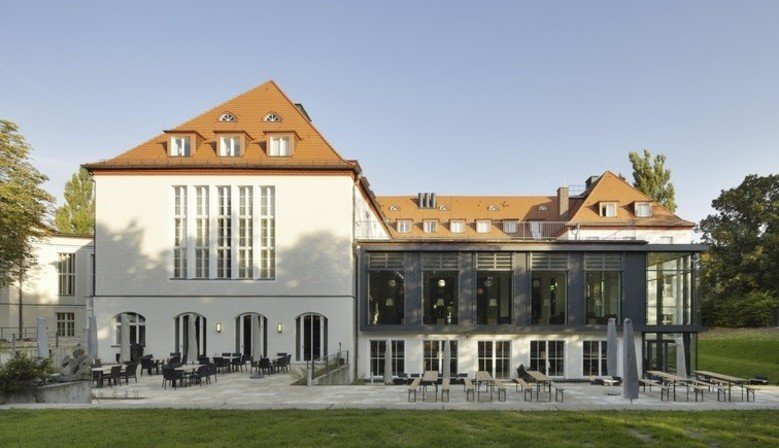
Ninth International Workshop on
Practical Applications of Stochastic Modelling
PASM'17
9th September 2017
Berlin, Germany
(collocated with QONFEST 2017)
Scope of Workshop
We encourage papers which apply current well-developed formalisms (stochastic Petri nets, stochastic process algebras, layered queueing networks, etc) to real-world case-studies. These studies might be of traditional web-service, Grid or computer architectures but also we strongly encourage studies from inter-disciplinary collaborations, such as biological and physical systems.
The common link is to see how researchers from diverse fields have overcome the problem of modelling large concurrent and stochastic communicating systems to obtain the particular style of stochastic metric that is important to their field.
Successful contributions may have demonstrated some novel theoretic advance to model their system or will have been diligent in constructing a detailed and realistic stochastic or probabilistic model and carried the modelling through to the analysis phase. Extra credit will be given for models which are backed up by experiment or simulation.
The aim is to end up with a collection of papers which could be used as outstanding examples of modelling practice in the field of stochastic modelling and exhibit all phases of the modelling lifecycle.
Some suggested topics on which we would encourage submission, are listed below. This is by no means an exhaustive list and any paper in the general area of the conference scope would be warmly welcomed.
- Case-study analysis using stochastic paradigms and novel analytic
variations on those paradigms to enable better practical analysis, e.g.:
- stochastic process algebras
- stochastic Petri nets
- layered queueing networks
- stochastic automata networks
- queueing networks
- fluid stochastic Petri nets
- stochastic ambient calculus
- Specific interdisciplinary topics that we would be particularly interested
to hear from include application of systematic probabilistic or stochastic
analysis techniques to, for instance:
- biological/epidemiological models
- models of computer virus/worm infection
- spatial modelling of chemical/nuclear reactions
- decision making, planning and scheduling
- geophysical models of large dynamical systems: e.g. weather/ocean systems, lava flows
- Stochastic and probabilistic models from computing areas such as:
- power consumption/conservation
- computer security
- cloud computing
- distributed and fault-tolerant systems
- adhoc wireless communication systems
- embedded systems
- safety-critical systems
- cyber-physical systems
- smart cities
- performance analysis of massively parallel architectures
- Methods for the solution of practical large-scale problems, for instance:
- Parallel and distributed solution of Markov chains
- Performance analysis using GPU-accelerated architectures
- Fluid approximations
- Mean field analysis
- Stochastic simulation
- Product form solution
- MTBDD based methods
- State space reduction
Publication
The proceedings of PASM'17 will appear as an issue of Elsevier's ENTCS (Electronic Notes in Theoretical Computer Science). This will appear after the workshop. Delegates at the workshop will be given an informal proceedings for the event. Authors will have the opportunity to update papers for the ENTCS proceedings following the workshop.
Instructions to authors
Electronic paper submission will be available through Easy Chair.
Papers should be original work of between 15 and 20 pages long, including figures and bibliography, and in single-column format. Submission is required in PDF format. Word files cannot be accepted. Please follow the manuscript preparation guidelines on the ENTCS web page.
Accepted papers
- Marco Gribaudo, Riccardo Pinciroli and Kishor Trivedi Epistemic Uncertainty Propagation in Power Models
- Said Naser Said Kamil and Nigel Thomas Investigating the Cost of Transfer Delay on the Performance of Security in Cloud Computing
- Johanne Cohen, Alexandre Fauquette, Jean-Michel Fourneau, Gilles-Christian Noukela and Nihal Pekergin N. Convex Stochastic Bounds and Stochastic Optimisation on Graphs
- Illes Horvath, Zsofia Talyigas and Miklos Telek An optimal inverse Laplace transform method without overshoot -- an integral based interpretation
- Marco Gribaudo, Mauro Iacono and Daniele Manini Performance evaluation of replication policies in microservice based architectures
- Paul Piho, Anastasis Georgoulas and Jane Hillston Goals and resource constraints in CARMA
- Karim Lounis and Samir Ouchani Stochastic-based Semantics Of Attack-Defense Trees For Security Assessment
- Bjorn Postema and Boudewijn Haverkort Evaluation of Advanced Data Centre Power Management Strategies
- Claudia Krull, Marcus Thiel and Graham Horton Testing Applicability of Virtual Stochastic Sensors for Non-Intrusive Appliance Load Monitoring
- Marziyeh Bayati Power Management Policy for Heterogeneous Data Center Based on Histogram and Discrete-Time MDP
Programme Committee
- Nigel Thomas, Newcastle University
- William Knottenbelt, Imperial College London
- Matthew Forshaw, Newcastle University
- Marco Gribaudo, Politecnico di Milano
- Katja Gilly, Miguel Hernandez University
- Avelino Zorzo, PUCRS
- Andrea Marin, University of Venice
- Jeremy Bryans, Centre for Mobility and Transport, Coventry University
- Stephen Gilmore, School of Informatics, University of Edinburgh
- Soraya Zertal, Universite de Versailles Saint-Quentin
- David Parker, University of Birmingham
- Markus Siegle, Uni Bw Munich
- Kalyan Perumalla, Oak Ridge National Laboratory
- Tadeusz Czachorski, IITiS PAN, Polish Academy of Sciences
- Helen Karatza, Aristotle University of Thessaloniki
- Sabine Wittevrongel, Ghent University
- John Murphy, University College Dublin
- Paulo Fernandes, PUCRS
- Leila Kloul, Universite de Versailles
- Paolo Zuliani, Newcastle University
- Katinka Wolter, Freie Universitaet zu Berlin
- Philipp Reinecke, Freie Universität Berlin
- Samuel Kounev, University of Wuerzburg
- Natarajan Gautam, Texas A&M University
- Andras Horvath, University of Turin
- Miklos Telek, Budapest University of Technology and Economics
- Andrea Vandin, IMT Institute for Advanced Studies Lucca, Italy
- Peter Harrison, Imperial College London
Workshop organisers
William Knottenbelt
Imperial College London
Nigel Thomas, Newcastle University Matthew Forshaw, Newcastle University